Application of Neural Radiance Fields (NeRFs) for 3D Model Representation in the Industrial Metaverse
Abstract
1. Introduction
1.1. Motivation
1.2. Technological Context and Related Research
1.3. Objectives and Main Contributions
1.4. Structure
2. Development of a Prototype of Industrial Metaverse for Teaching/Learning Activities
2.1. Design Methodology
2.2. Development of the Metaverse Platform
2.3. Development of Realistic Industrial Objects Based on NeRFs
- (S1)
- Capture of model images: Record a video around the object from different perspectives, followed by the extraction of the individual images for use in the NeRF model generation process.
- (S2)
- NeRF Generation: Create a folder structure in Instant NeRF [20] and generate JSON file based on captured images for 3D reconstruction. This step culminates in generating the NeRF 3D model.
- (S3)
- Exporting NeRF to Unity: Transfer the NeRF model from Instant NeRF to Unity. During this process, resolution is configured to ensure a visually adequate representation of the model in the Unity environment.
- (S4)
- Creation of 3D texture: Assemble a mosaic of model images. This mosaic is imported into Unity as a 2D texture, which is then transformed into a 3D texture to be applied to the NeRF object.
- (S5)
- Incorporating NeRF Object into Unity Scene: Create a material based on the 3D texture and apply the 3D texture to the NeRF object. A GameObject is configured to effectively represent the NeRF model within the virtual scene created in Unity.
- (S6)
- Metaverse integration: Develop scripts that allow real-time interactions with the NeRF model. Specific components are configured to share the object in a metaverse, utilizing Photon PUN2 to synchronize and enable interaction among different users in the virtual environment.
Case Study: Obtaining a NeRF in Unity
3. Results
3.1. Showcasing the Results through User Experience
3.2. Case Study: A Comparative Analysis of Models Based on NeRF and Models Based on Photogrammetry
3.3. Case Study: A Comparative Analysis of Models Based on NeRF and Mesh Approaches in Unity
3.4. Case Study: Real NeRF in Unreal Engine
4. Discussion
5. Conclusions
Author Contributions
Funding
Institutional Review Board Statement
Informed Consent Statement
Data Availability Statement
Conflicts of Interest
References
- Mostajeran, F.; Fischer, M.; Steinicke, F.; Kühn, S. Effects of exposure to immersive computer-generated virtual nature and control environments on affect and cognition. Sci. Rep. 2023, 13, 220. [Google Scholar] [CrossRef] [PubMed]
- Umair, M.; Sharafat, A.; Lee, D.E.; Seo, J. Impact of Virtual Reality-Based Design Review System on User’s Performance and Cognitive Behavior for Building Design Review Tasks. Appl. Sci. 2022, 12, 7249. [Google Scholar] [CrossRef]
- Solanes, J.E.; Montava-Jordà, S.; Golf-Laville, E.; Colomer-Romero, V.; Gracia, L.; Muñoz, A. Enhancing STEM Education through Interactive Metaverses: A Case Study and Methodological Framework. Appl. Sci. 2023, 13, 10785. [Google Scholar] [CrossRef]
- Dwivedi, Y.K.; Hughes, L.; Baabdullah, A.M.; Ribeiro-Navarrete, S.; Giannakis, M.; Al-Debei, M.M.; Dennehy, D.; Metri, B.; Buhalis, D.; Cheung, C.M.; et al. Metaverse beyond the hype: Multidisciplinary perspectives on emerging challenges, opportunities, and agenda for research, practice and policy. Int. J. Inf. Manag. 2022, 66, 102542. [Google Scholar] [CrossRef]
- Bhattacharya, P.; Saraswat, D.; Savaliya, D.; Sanghavi, S.; Verma, A.; Sakariya, V.; Tanwar, S.; Sharma, R.; Raboaca, M.S.; Manea, D.L. Towards future internet: The metaverse perspective for diverse industrial applications. Mathematics 2023, 11, 941. [Google Scholar] [CrossRef]
- Liu, S.; Xie, J.; Wang, X. QoE enhancement of the industrial metaverse based on Mixed Reality application optimization. Displays 2023, 79, 102463. [Google Scholar] [CrossRef]
- Kontkanen, I. Using 3D Techniques in Video Game Concept Art: Creating Environmental Concept Art for a Video Game. BSc Thesis. Tampere University of Applied Sciences (TAMK). May 2021. Available online: https://www.theseus.fi/bitstream/handle/10024/501432/Iida_Kontkanen.pdf (accessed on 19 February 2024).
- Ortiz, J.S.; Guevara, B.S.; Espinosa, E.G.; Santana, J.; Tamayo, L.R.; Andaluz, V.H. 3D Virtual Content for Education Applications. In Proceedings of the 2020 15th Iberian Conference on Information Systems and Technologies (CISTI), Seville, Spain, 24–27 June 2020; pp. 1–5. [Google Scholar] [CrossRef]
- Alhonkoski, M.; Salminen, L.; Pakarinen, A.; Veermans, M. 3D technology to support teaching and learning in health care education—A scoping review. Int. J. Educ. Res. 2021, 105, 101699. [Google Scholar] [CrossRef]
- Montusiewicz, J.; Barszcz, M.; Korga, S. Preparation of 3D Models of Cultural Heritage Objects to Be Recognised by Touch by the Blind-Case Studies. Appl. Sci. 2022, 12, 11910. [Google Scholar] [CrossRef]
- Remondino, F.; El-Hakim, S. Image-based 3D modelling: A review. Photogramm. Rec. 2006, 21, 269–291. [Google Scholar] [CrossRef]
- Mildenhall, B.; Srinivasan, P.P.; Tancik, M.; Barron, J.T.; Ramamoorthi, R.; Ng, R. NeRF: Representing Scenes as Neural Radiance Fields for View Synthesis. Commun. ACM 2021, 65, 99–106. [Google Scholar] [CrossRef]
- Pumarola, A.; Corona, E.; Pons-Moll, G.; Moreno-Noguer, F. D-nerf: Neural radiance fields for dynamic scenes. In Proceedings of the IEEE/CVF Conference on Computer Vision and Pattern Recognition, Nashville, TN, USA, 20–25 June 2021; pp. 10318–10327. [Google Scholar]
- Xu, Q.; Xu, Z.; Philip, J.; Bi, S.; Shu, Z.; Sunkavalli, K.; Neumann, U. Point-nerf: Point-based neural radiance fields. In Proceedings of the IEEE/CVF Conference on Computer Vision and Pattern Recognition, New Orleans, LA, USA, 18–24 June 2022; pp. 5438–5448. [Google Scholar]
- Unity. Game Development Platform. Available online: https://unity.com/ (accessed on 19 February 2024).
- UnrealEngine. Available online: https://www.unrealengine.com (accessed on 19 February 2024).
- Quest, M. Oculus SDK Download. Available online: https://developer.oculus.com/downloads/package/oculus-platform-sdk (accessed on 19 February 2024).
- Engine, P. Photon Unity Networking 2 Download. Available online: https://www.photonengine.com/pun (accessed on 19 February 2024).
- Engine, P. Photon Voice Download. Available online: https://www.photonengine.com/voice (accessed on 19 February 2024).
- NVlabs. Instant Neural Graphics Primitives. Available online: https://github.com/NVlabs/instant-ngp (accessed on 19 February 2024).
- Colmap. Available online: https://colmap.github.io/install.html (accessed on 19 February 2024).
- ImageMagick Studio LLC. Available online: https://imagemagick.org (accessed on 19 February 2024).
- kwea123. volumeShad2.shader. Software Resource. 2021. Available online: https://github.com/MistyNight/NerfUnity/commit/918ecd1bcb00b4df6cb1fa48678505ce95ce9bec (accessed on 19 February 2024).
- RealityCapture—3D Models from Photos and/or Laser Scans. Available online: https://www.capturingreality.com/ (accessed on 22 February 2024).
- Tancik, M.; Weber, E.; Ng, E.; Li, R.; Yi, B.; Wang, T.; Kristoffersen, A.; Austin, J.; Salahi, K.; Ahuja, A.; et al. Nerfstudio: A Modular Framework for Neural Radiance Field Development. In Proceedings of the Special Interest Group on Computer Graphics and Interactive Techniques Conference Conference Proceedings, Los Angeles CA USA, 6–10 August 2023. [Google Scholar] [CrossRef]
- Luma AI. Available online: https://lumalabs.ai/ (accessed on 22 February 2024).
- Li, C.; Li, S.; Zhao, Y.; Zhu, W.; Lin, Y. RT-NeRF: Real-Time On-Device Neural Radiance Fields Towards Immersive AR/VR Rendering. In Proceedings of the 41st IEEE/ACM International Conference on Computer-Aided Design, San Diego, CA, USA, 30 October–3 November 2022; pp. 1–9. [Google Scholar]
- Volinga. Available online: https://volinga.ai/ (accessed on 22 February 2024).
- GPU Benchmarks for Deep Learning|Lambda. Available online: https://lambdalabs.com/gpu-benchmarks (accessed on 22 February 2024).
- Liu, S.; Zhang, X.; Zhang, Z.; Zhang, R.; Zhu, J.Y.; Russell, B.C. Editing Conditional Radiance Fields. In Proceedings of the 2021 IEEE/CVF International Conference on Computer Vision (ICCV), Montreal, BC, Canada, 11–17 October 2021; pp. 5753–5763. [Google Scholar] [CrossRef]
- Kobayashi, S.; Matsumoto, E.; Sitzmann, V. Decomposing NeRF for Editing via Feature Field Distillation. arXiv 2022, arXiv:abs/2205.15585. [Google Scholar] [CrossRef]
- Mirzaei, A.; Aumentado-Armstrong, T.; Derpanis, K.; Kelly, J.; Brubaker, M.A.; Gilitschenski, I.; Levinshtein, A. SPIn-NeRF: Multiview Segmentation and Perceptual Inpainting with Neural Radiance Fields. arXiv 2022, arXiv:abs/2211.12254. [Google Scholar] [CrossRef]
- Lan, Y.; Loy, C.C.; Dai, B. Correspondence Distillation from NeRF-based GAN. arXiv 2022, arXiv:abs/2212.09735. [Google Scholar] [CrossRef]
- Wu, Q.; Tan, J.; Xu, K. PaletteNeRF: Palette-based Color Editing for NeRFs. arXiv 2022, arXiv:abs/2212.12871. [Google Scholar] [CrossRef]
- Hedman, P.; Srinivasan, P.P.; Mildenhall, B.; Barron, J.; Debevec, P. Baking Neural Radiance Fields for Real-Time View Synthesis. In Proceedings of the 2021 IEEE/CVF International Conference on Computer Vision (ICCV), Montreal, BC, Canada, 11–17 October 2021; pp. 5855–5864. [Google Scholar] [CrossRef]


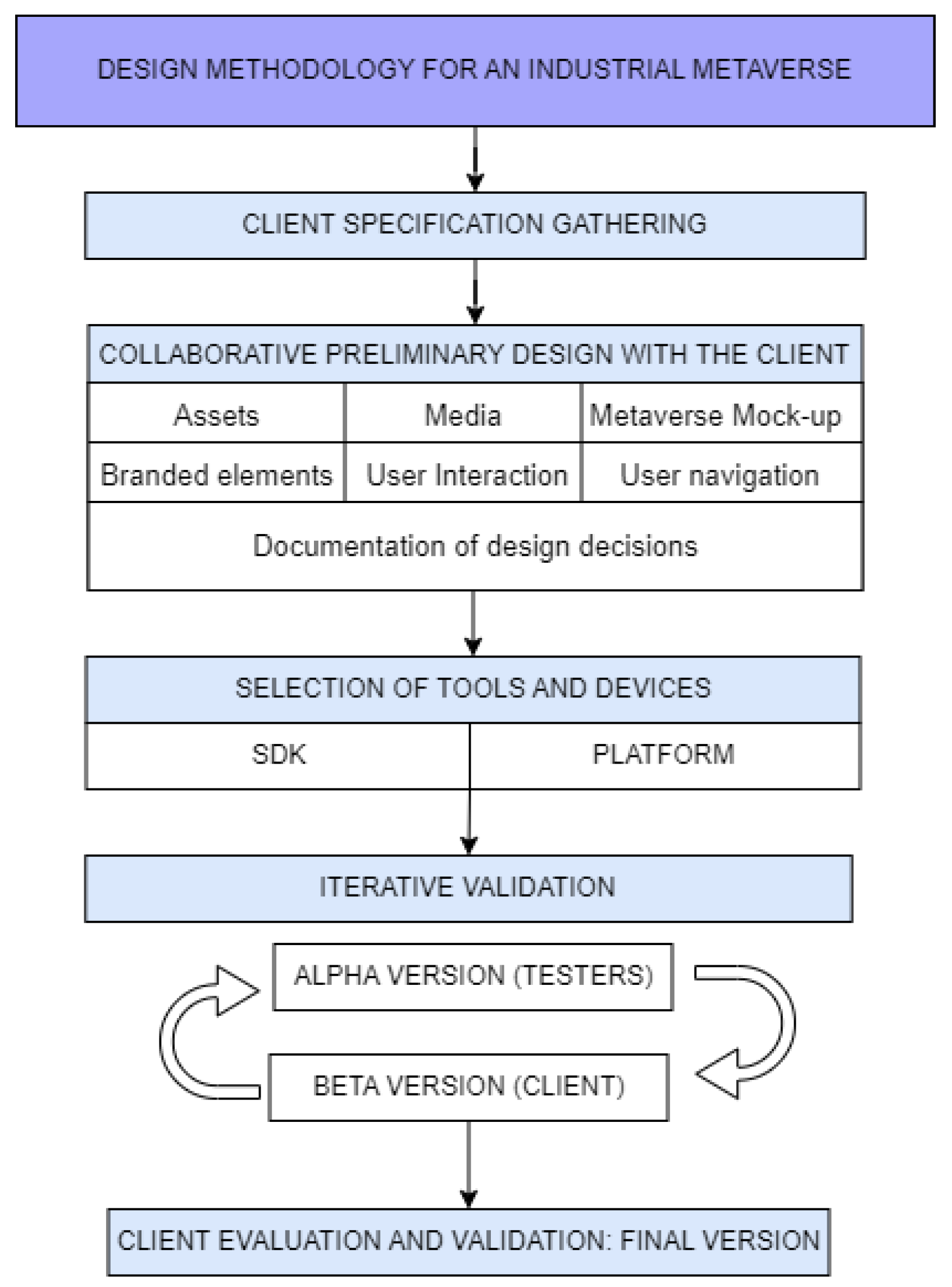
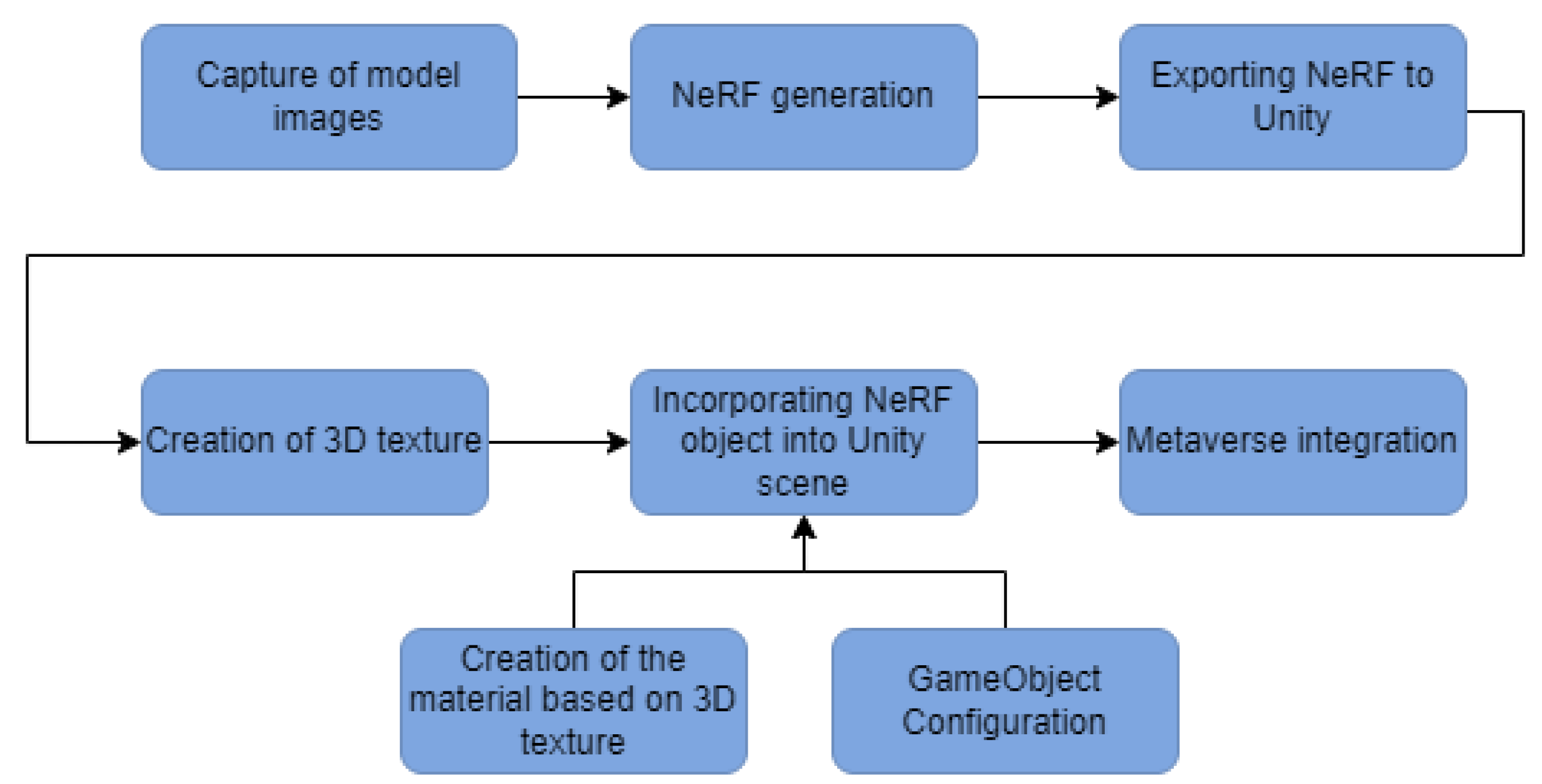
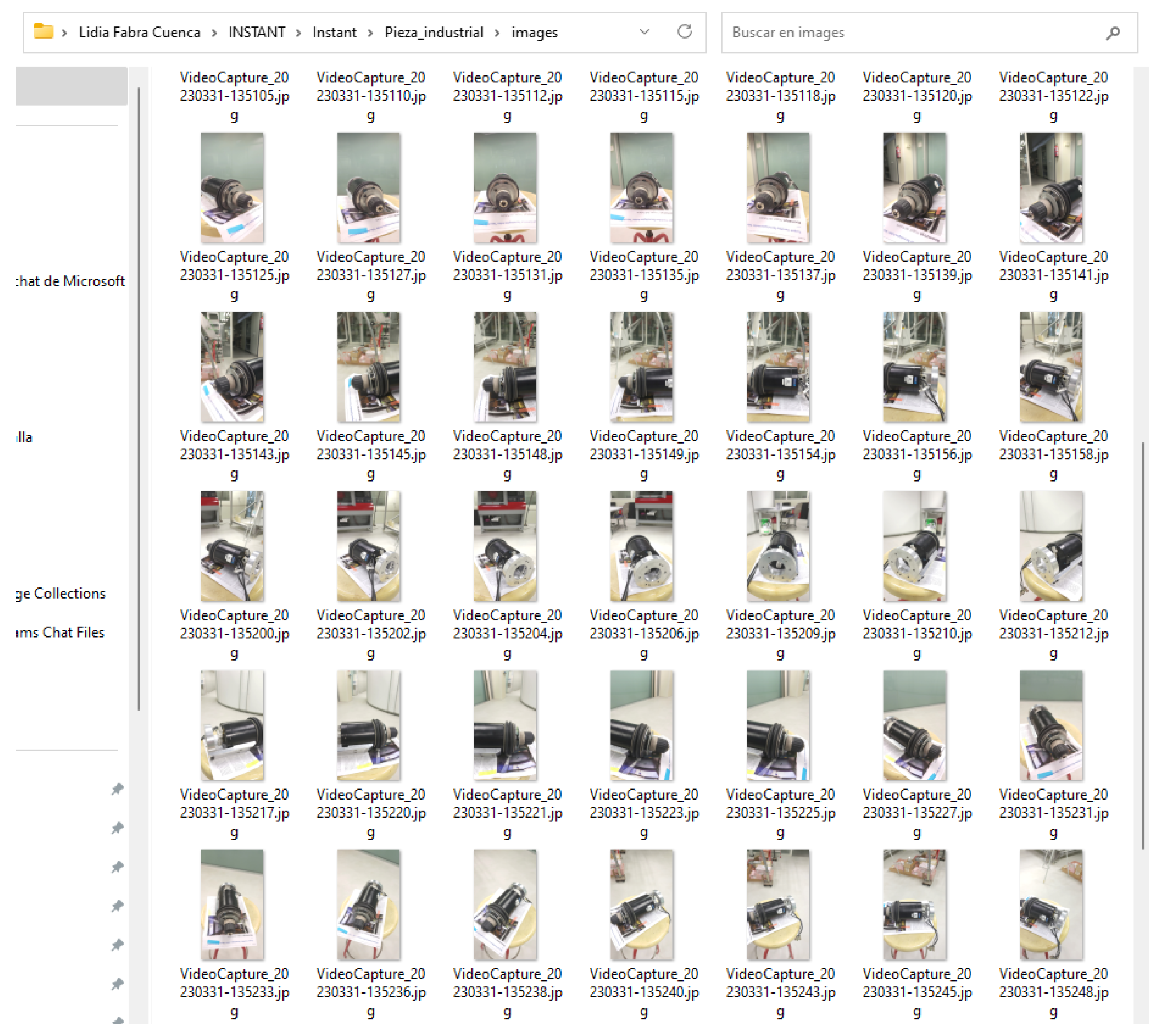
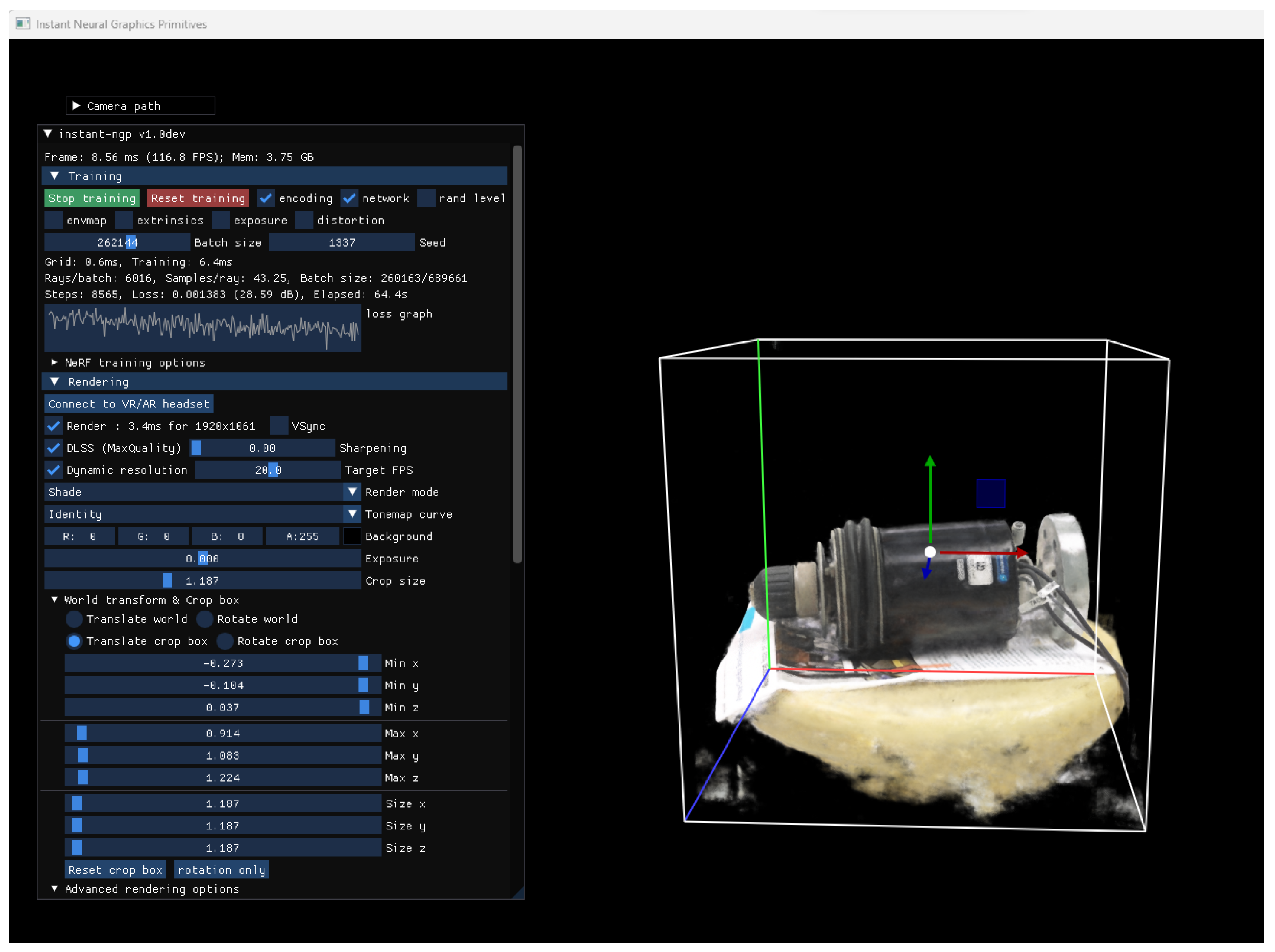
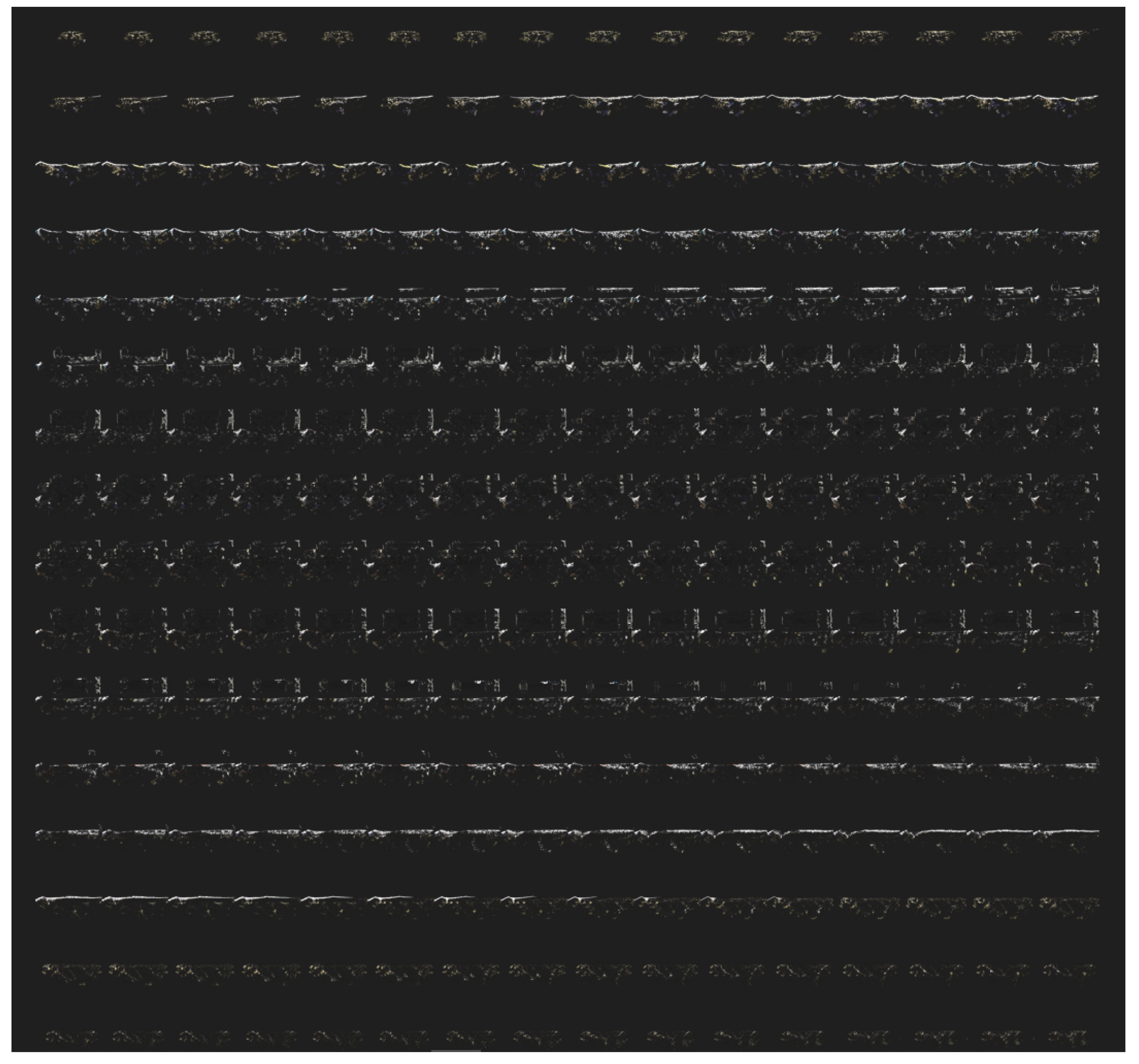
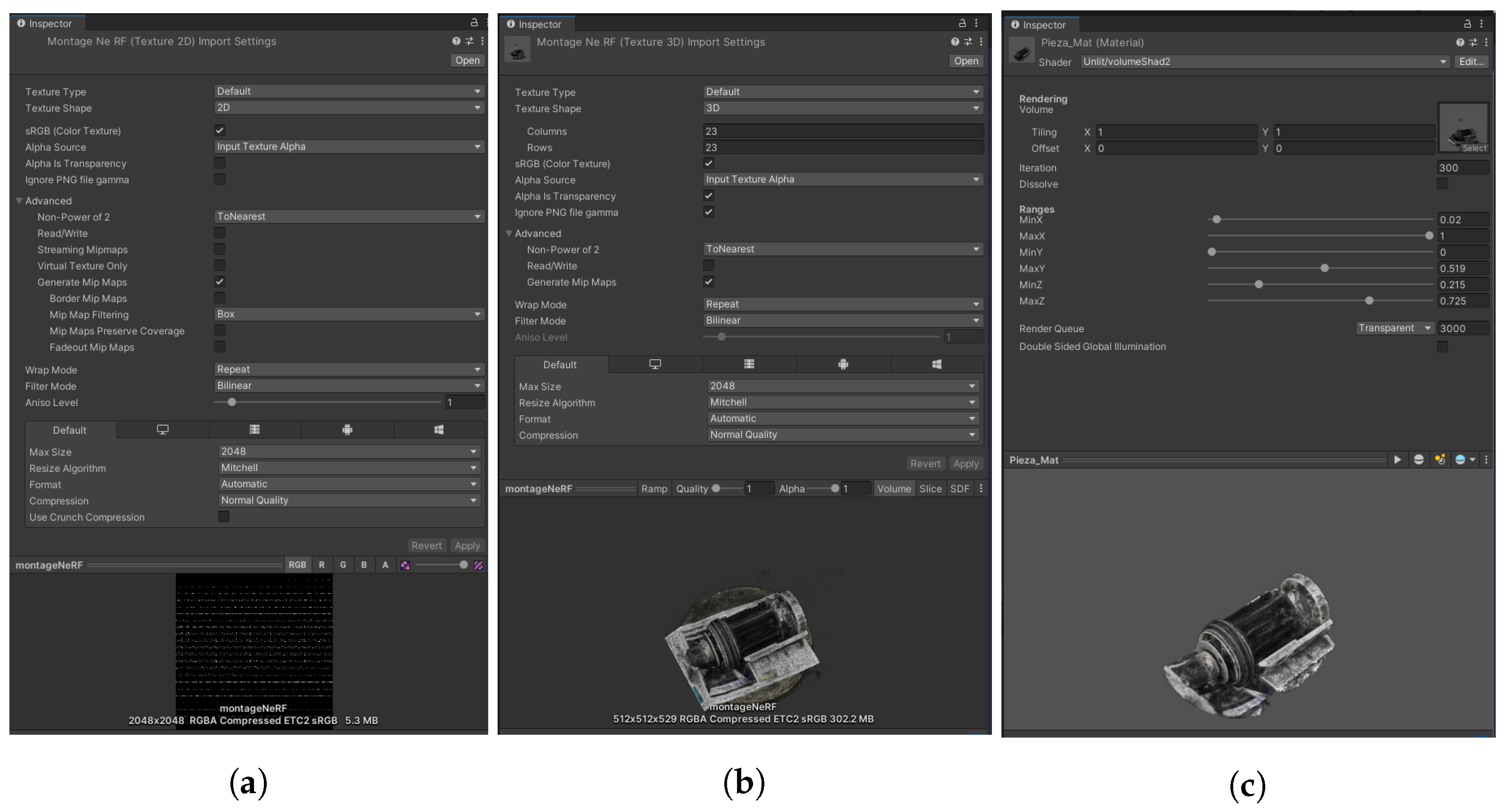
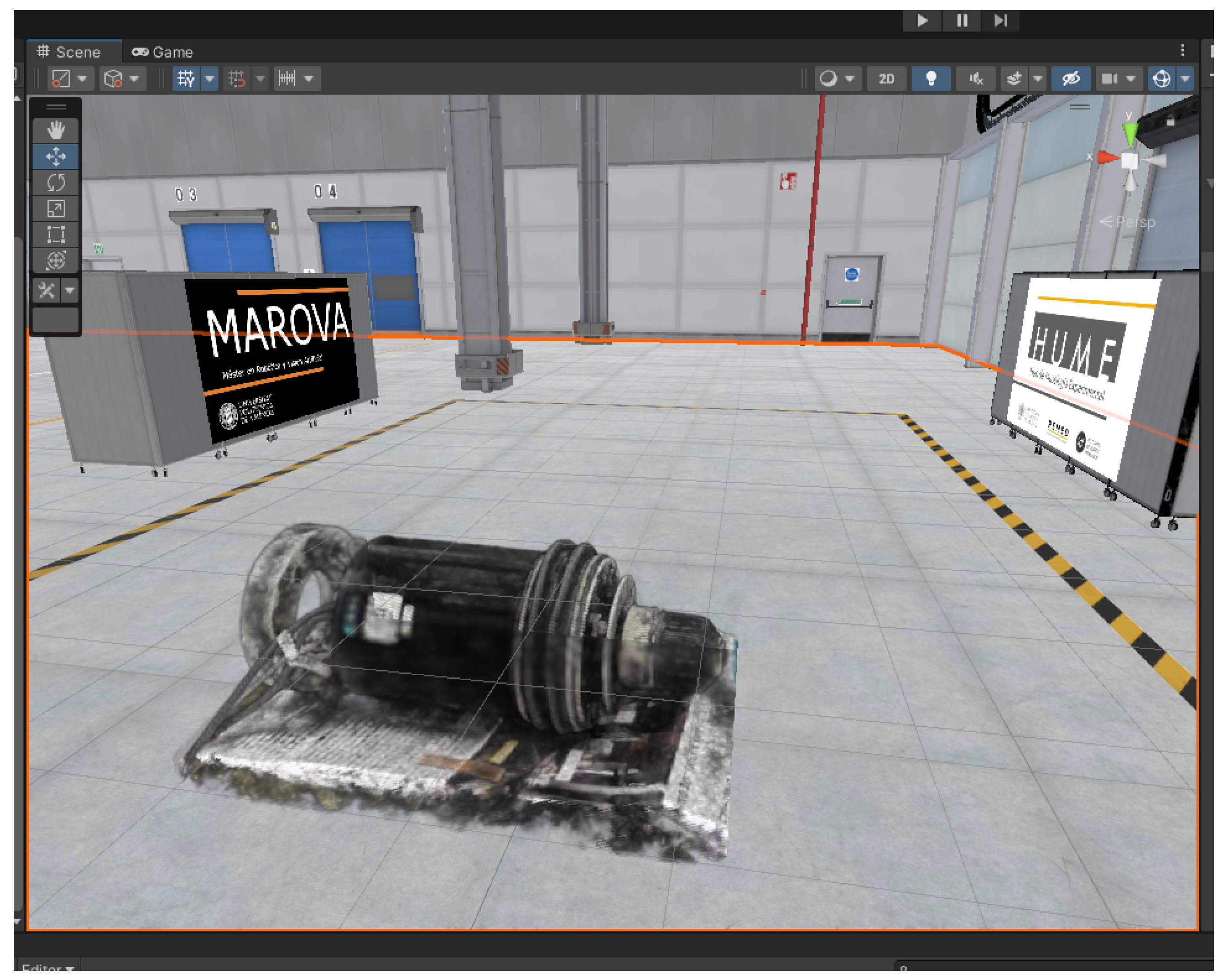
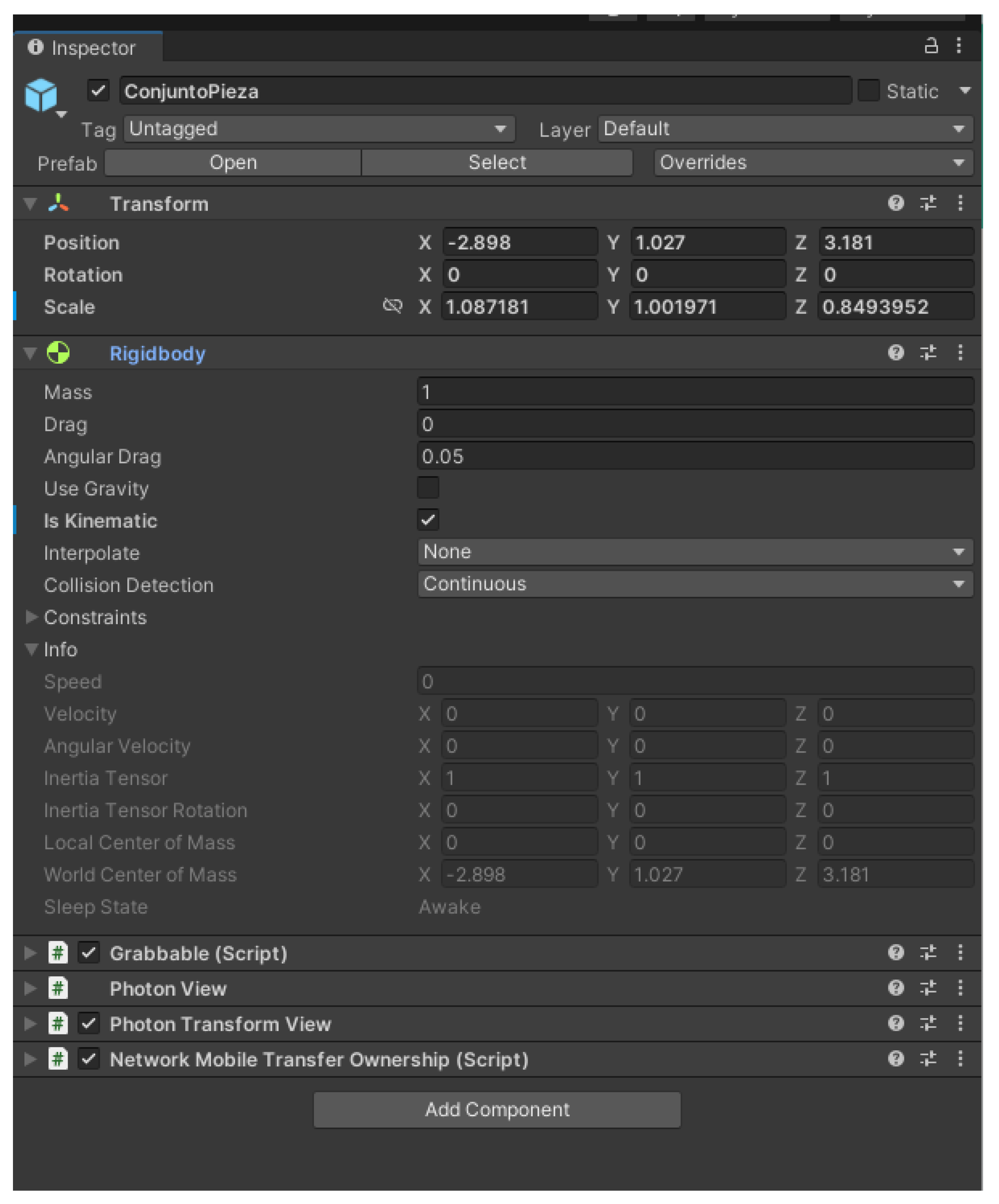
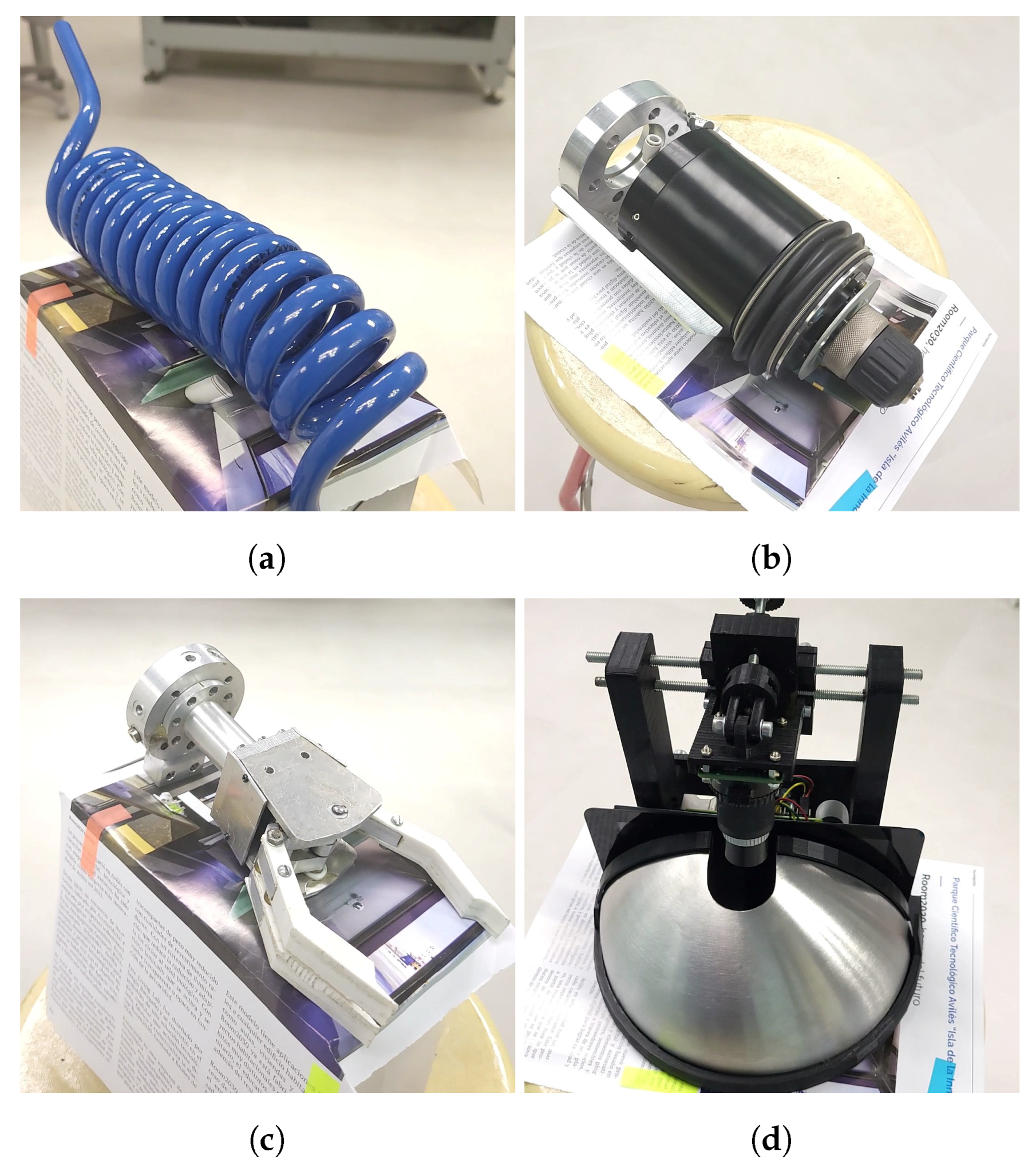
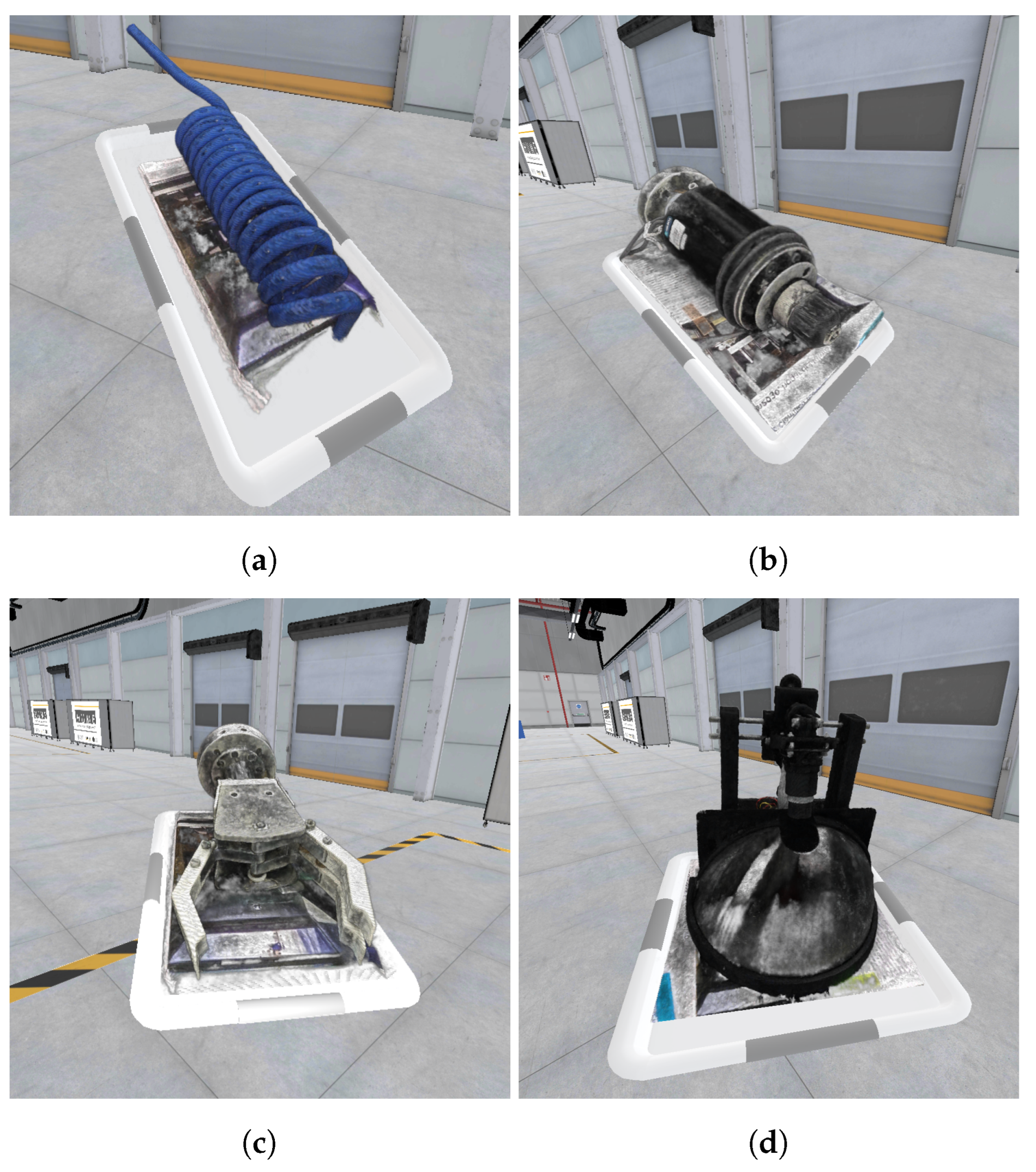

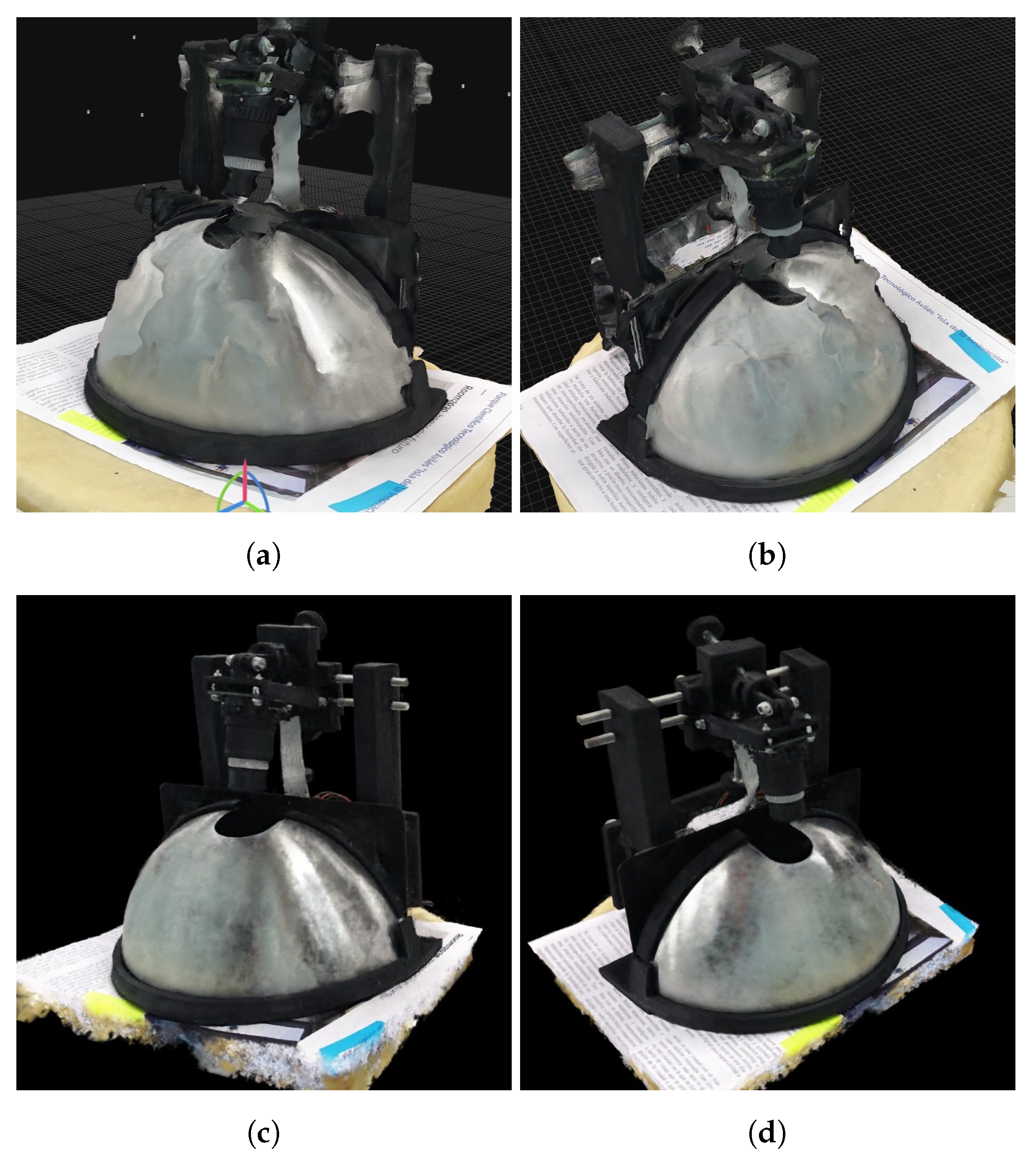
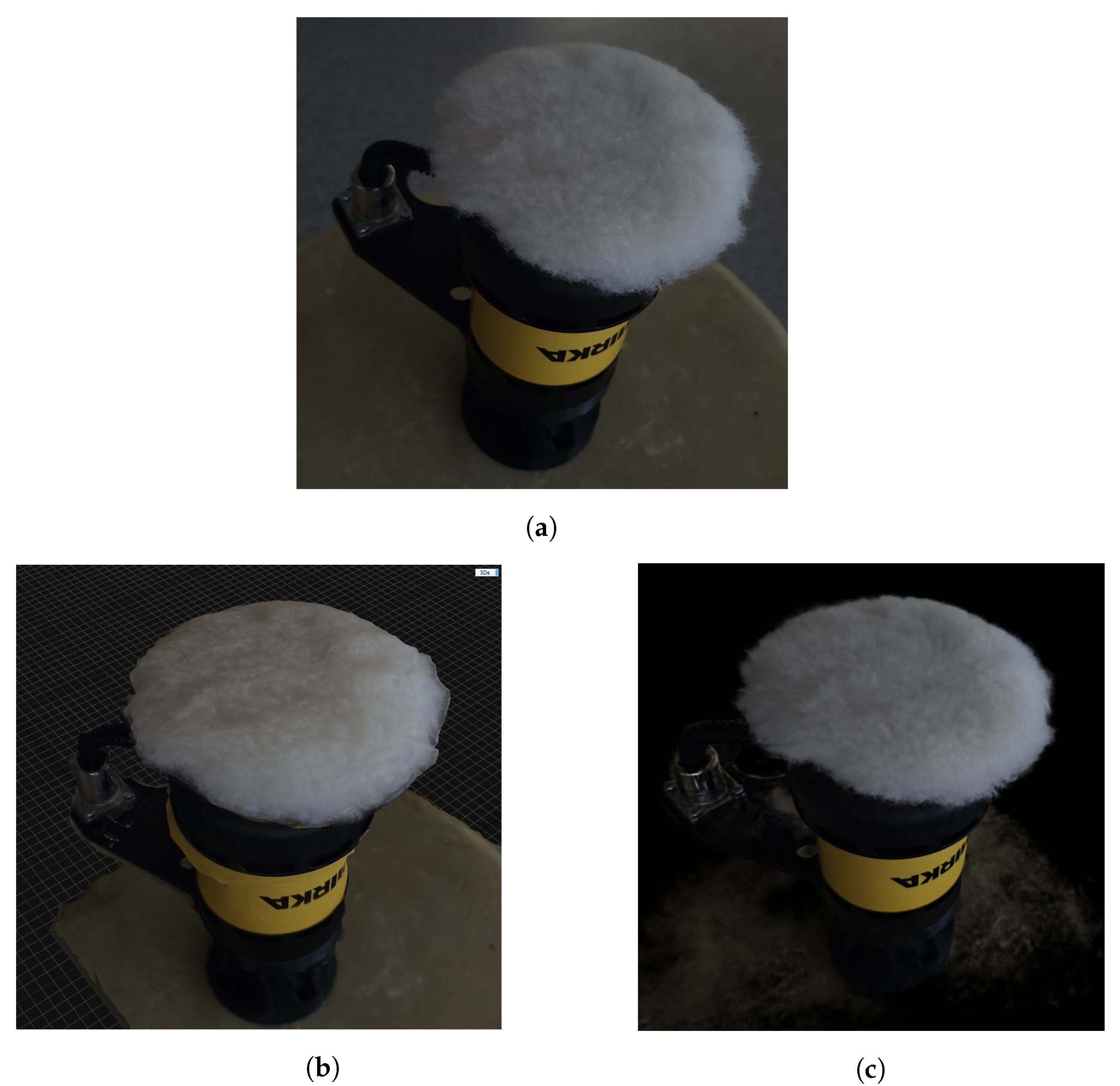
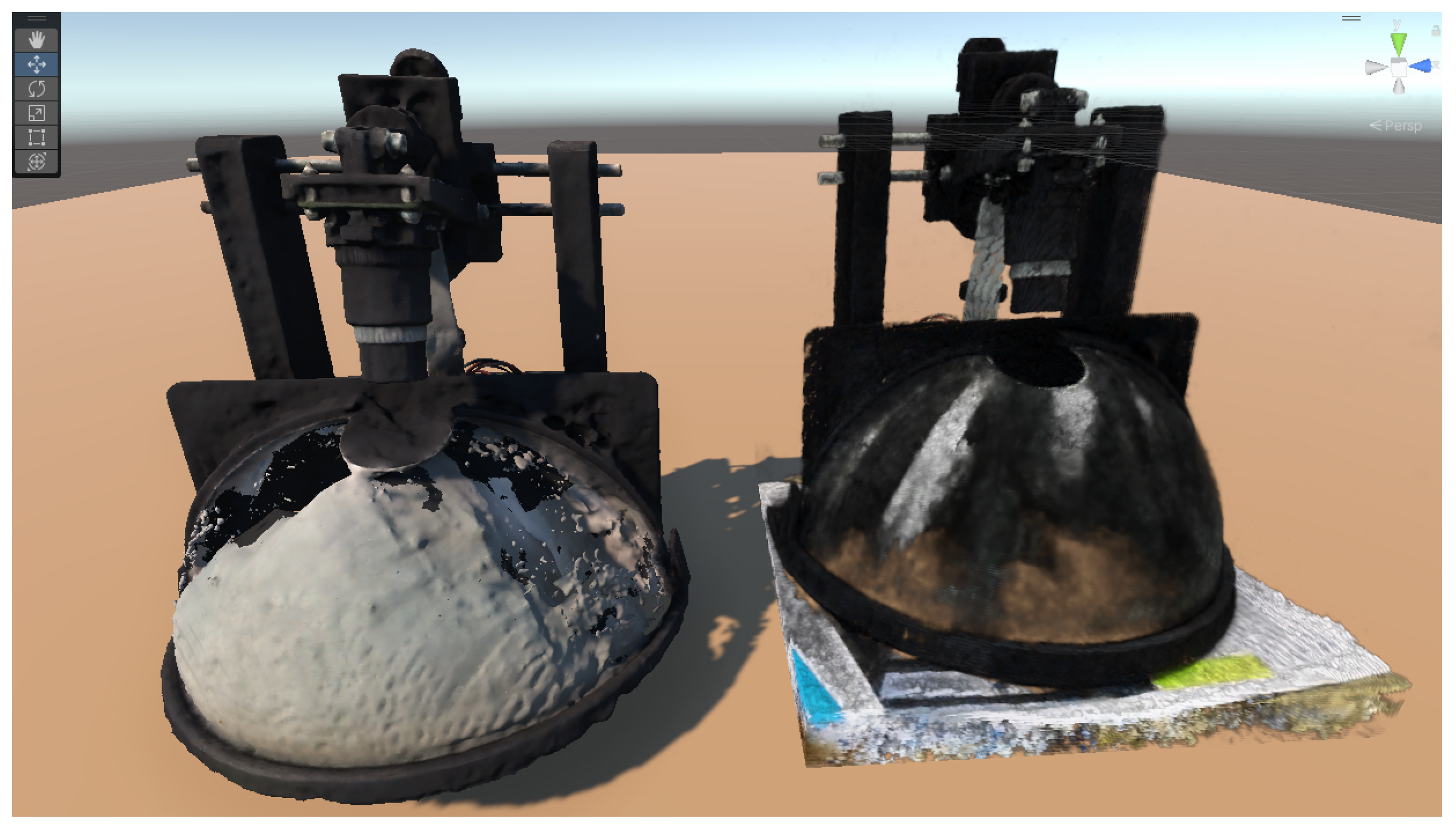
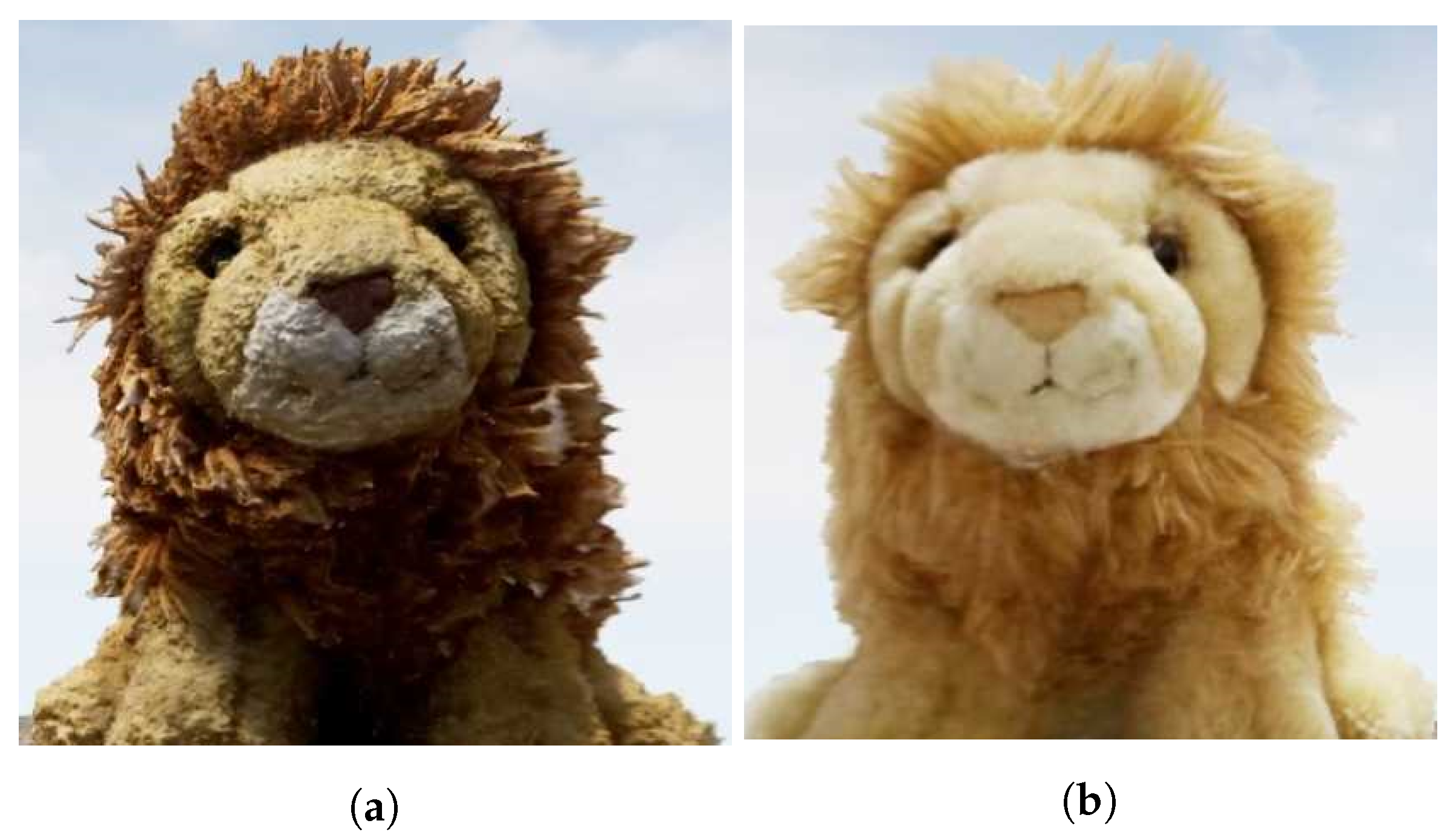
| Graphic Card | NeRF (SPS) | NVOL (SPS) |
|---|---|---|
| RTX 4090 | 1.2 | 12.0 |
| RTX A6000 | 0.9 | 9.0 |
| RTX 3090 | 0.8 | 8.0 |
| RTX 3080 | 0.7 | 7.0 |
| RTX A5000 | 0.6 | 6.0 |
| RTX 3070 | 0.5 | 5.0 |
Disclaimer/Publisher’s Note: The statements, opinions and data contained in all publications are solely those of the individual author(s) and contributor(s) and not of MDPI and/or the editor(s). MDPI and/or the editor(s) disclaim responsibility for any injury to people or property resulting from any ideas, methods, instructions or products referred to in the content. |
© 2024 by the authors. Licensee MDPI, Basel, Switzerland. This article is an open access article distributed under the terms and conditions of the Creative Commons Attribution (CC BY) license (https://creativecommons.org/licenses/by/4.0/).
Share and Cite
Fabra, L.; Solanes, J.E.; Muñoz, A.; Martí-Testón, A.; Alabau, A.; Gracia, L. Application of Neural Radiance Fields (NeRFs) for 3D Model Representation in the Industrial Metaverse. Appl. Sci. 2024, 14, 1825. https://doi.org/10.3390/app14051825
Fabra L, Solanes JE, Muñoz A, Martí-Testón A, Alabau A, Gracia L. Application of Neural Radiance Fields (NeRFs) for 3D Model Representation in the Industrial Metaverse. Applied Sciences. 2024; 14(5):1825. https://doi.org/10.3390/app14051825
Chicago/Turabian StyleFabra, Lidia, J. Ernesto Solanes, Adolfo Muñoz, Ana Martí-Testón, Alba Alabau, and Luis Gracia. 2024. "Application of Neural Radiance Fields (NeRFs) for 3D Model Representation in the Industrial Metaverse" Applied Sciences 14, no. 5: 1825. https://doi.org/10.3390/app14051825
APA StyleFabra, L., Solanes, J. E., Muñoz, A., Martí-Testón, A., Alabau, A., & Gracia, L. (2024). Application of Neural Radiance Fields (NeRFs) for 3D Model Representation in the Industrial Metaverse. Applied Sciences, 14(5), 1825. https://doi.org/10.3390/app14051825








